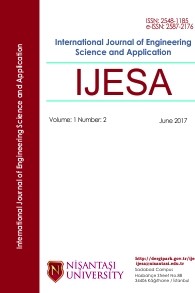The Performance of Types of Fuel Cell: Energy Generation
The Performance of Types of Fuel Cell: Energy Generation
___
- Hasan Isanlou, Kazem Nadafi, Mohammad khazaee and Zeinab Yavari, 2014, investigation of the efficiency of microbial fuel cell reactor in sewage treatment with electricity production, journal of north khorasan university of medical sciences, 6 (3), 497-504.
- Fuel Cell (Renewable Energy and Energy Efficiency) www.satba.gov.ir/pt/hydrogen/fuelcell.
- Marieh Tazicet, Mohammad Pazouki, Farideh Panjeh Ghoumi and Ghasem Pour Najaf, 2010, Bacteria producing bioenergy in microbial fuel cells, The first bioenergy conference in Iran, Tehran.
- Taghizadeh, Sima Alaei, 1395, Microbial fuel cell. The Scientific, Economic, Agricultural and Contemporary Industrial Weekly Magazine, No. 330, 36-38.
- Neda Dai, Gholam Hossein Shahidi Benjar, Ali Saberi and Sonia Aghighi, 2005, Microbial cell, The Fourth Biotechnology Conference of the Islamic Republic of Iran.
- Mohammad Mazidi Sharafabadi, 1393, fuel cells ,2-42.
- Vahid Najafi, Asghar Malekifar and Sadaf Mahmoodzadeh, 1394, investigation of effective factors in the improvement the efficiency of microbial fuel cells. The International Conference on New Research in Chemistry and Chemical engineering.
- Zeynab Yavari, Kazem Nadafi, Hasan Isanlou, Mohammad Khazaee, and Mohammad Hassan Mahmoudian, 2012, investigation of the generation of electrical energy from synthetic sewage treatment in microbial fuel cell. Journal of Qom University of Medical Sciences Sixth Day Fourth, Page 96-103.
- Bruce E. Logan, 2008, a microbial fuel cell.
- A Parkash, 2016, Microbial fuel cells: a source of bioenergy, J Microb Biochem Technol, 8, 247-255.
- Bruce E Logan, Bert Hamelers, René Rozendal, Uwe Schröder, Jürg Keller, Stefano Freguia, Peter Aelterman, Deepak Pant, Gilbert Van Bogaert, Ludo Diels,Karolien Vanbroekhoven, 2010, A review of the substrates used in microbial fuel cells (MFCs) for sustainable energy production, Environmental Science & Technology / Vol. 40, No. 17, 5181_5192. Korneel Rabaey,Willy Verstraete,2005, Microbial fuel cells: novel biotechnology for energy generation, TRENDS in Biotechnology, 23(6), 291-298.
- Mostafa Rahimnejad, Arash Adhami, Soheil Darvari, Alireza Zirepour,Sang-Eun Oh, 2015, Microbial fuel cell as new technology for bioelectricity generation: a review, Alexandria Engineering Journal, 54(3), 745-756.
- R Mark Ormerod, 2003, Solid oxide fuel cells, Chemical Society Reviews, 32(1), 17-28.
- ISSN: 2548-1185
- Başlangıç: 2016
- Yayıncı: Nişantaşı Üniversitesi
The Environmental Impact of Electric Discharge Machining
Ali KALYON, Abubaker Yousef Fatatit
USE OF FPGA FOR REAL-TIME K-MEANS CLUSTERİNG ALGORITHM
Muhammed YILDIRIM, Ahmet ÇINAR
İfeoluwa OMOTADE, İfeoluwapo BABALOLA
The Performance of Types of Fuel Cell: Energy Generation
Azadeh HABİBİ, Nahid MOUSAVİ, Masoumeh MOHAMMADİ, Sara FARAHMAND
